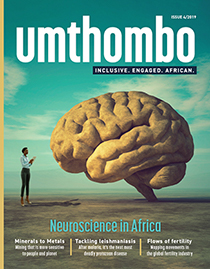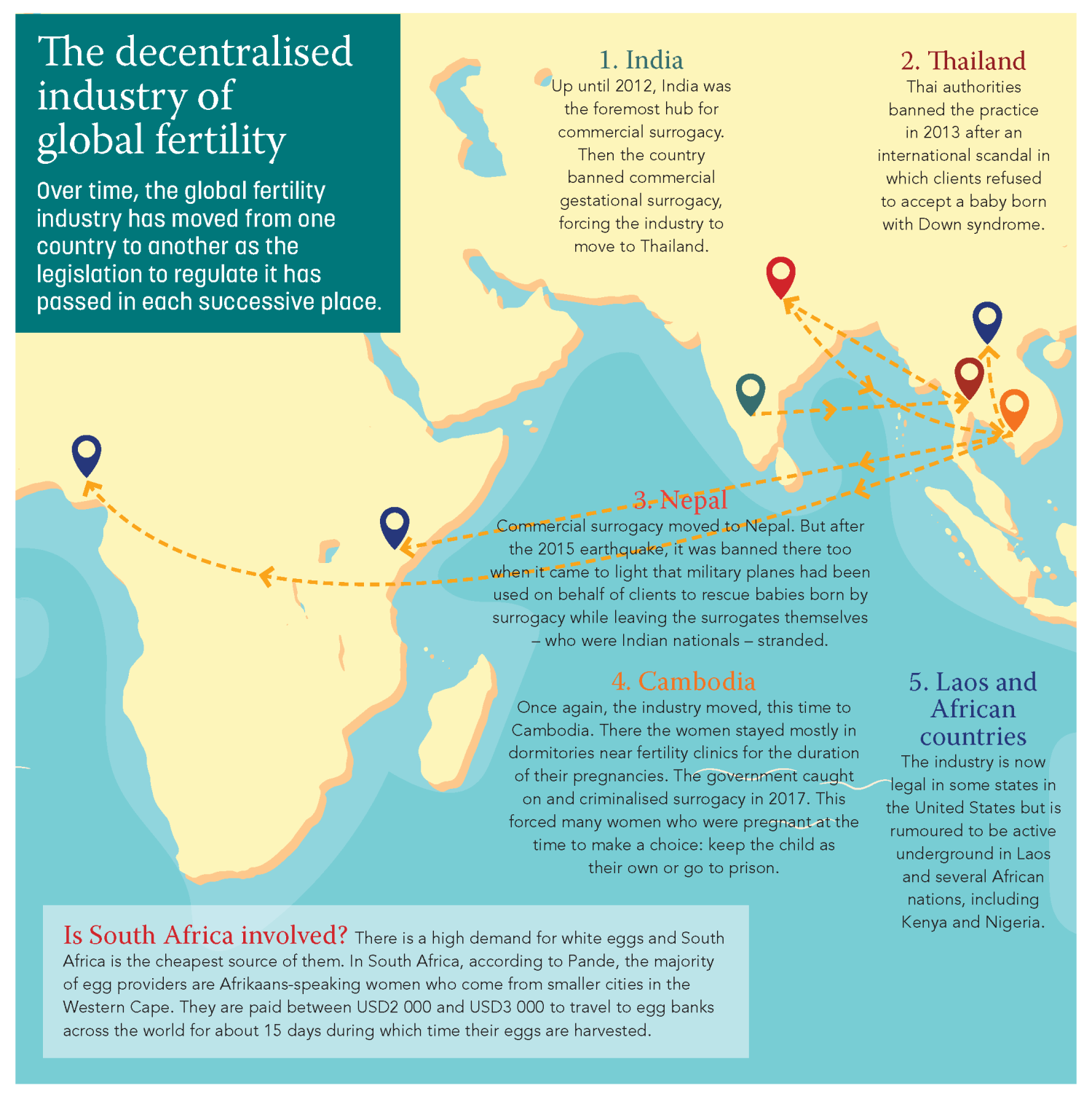Flows in the global fertility market
18 November 2019 | Story Ambre Nicolson. Photo Pexels. Read time 9 min.
What does the global fertility industry reproduce – apart from babies? Associate Professor Amrita Pande, a sociologist and feminist ethnographer at the University of Cape Town (UCT), seeks to answer this central question through her research on the global fertility market.
Human reproduction no longer relies solely on natural conception. The scientific advances that make this possible combined with ad hoc national legislation and the desires of couples struggling to conceive has created an international trade in fertility. This global industry is what Pande studies.
“The global fertility trade can include anything that goes into the making of a baby,” she explains. “The industry now occurs in many countries and involves multiple kinds of reproductive actors or labourers, including egg providers, surrogates, brokers, doctors and prospective parents.
“In these cases, you can travel to an egg bank in New Delhi to be matched with an egg donor who comes from Ukraine, South Africa or another country.”
“It’s an industry that has flourished against a legislative backdrop outlawing many of these activities.”
To illustrate how these processes might occur, Pande describes a common scenario. “These days, when you want to make a baby using assistive fertility technologies you can – if you are a very rich, heterosexual couple – do this in a place like California, where commercial surrogacy is legal. But, if you are a single father, a gay or lesbian couple, or if you want a ‘designer baby’ of a specific race, it gets complicated.
“In these cases, you can travel to an egg bank in New Delhi to be matched with an egg donor who comes from Ukraine, South Africa or another country. Your sperm will be used to fertilise this egg.
“The embryo will be flown to Laos where it will be inserted into a woman from Mexico, Cambodia or Thailand. The woman will live in a dormitory next to the fertility clinic for the duration of the pregnancy. When she gives birth, you will take the child and return to your home country.”
This, says Pande, is one global fertility flow – the subject of her current research on the industry.
The paradox of surrogacy
Pande’s first book, Wombs in Labor: Transnational Commercial Surrogacy in India, was the result of a decade of ethnographic research at a fertility clinic in western India.
“After spending so much time with the women at this clinic, I came to realise that my perspective was very Eurocentric. In the book, I tried to shift the focus away from the ethics and morality of the subject towards an understanding of this as a new form of reproductive labour market.”
Wombs in Labor explored the different forms this market takes, from ideas of surrogacy as ‘god’s work’ to a conception of it as ‘dirty work’. This is what Pande terms the paradox of surrogacy.
“Often it is the first time that the women involved in this labour market are ever celebrated, praised or rewarded for their fertility. An irony in an anti-natal state like India where women are told not to have babies or where having many babies is linked to poverty,” says Pande.
“Often it is the first time that the women involved in this labour market are ever celebrated, praised or rewarded for their fertility.”
The book goes on to describe the convenient way that the bodies of these women are celebrated when they’re serving others, but regulated when they do the same thing through their own agency – through punitive measures, such as long-term forced birth control – as a form of neo-eugenics.
Race, reproduction and inequality
In her current research, Pande has zoomed out from surrogacy to look at the many interwoven processes that make up flows of fertility around the world.
“You might think that new fertility technologies would remove the burden of reproductive labour from women, or at the very least, challenge societal norms. But in fact, my recent research shows that the global fertility industry reaffirms pre-existing inequalities.”
These inequalities are reproduced in several ways, according to Pande. On an individual level, most of the surrogates and egg providers are women from poorer countries in the global south, who bear children for richer couples hailing from the global north. Pande is careful to describe these women as active participants in this process but admits that they are also vulnerable to exploitation.
“My recent research shows that the global fertility industry reaffirms pre-existing inequalities.”
On a national scale, she likens the industry to other factory industries that move from one country to another as the legislation to regulate the industry is passed in each successive place.
There is also the question of how race and reproduction intersect.
“In my second book, I look at the reaffirmation of the desirability of whiteness and the reasons that people seek out egg providers of a specific race,” says Pande. In many cases this happens when a woman who is part of a couple feels insecure that she is not providing her own genetic material and therefore wants as close a match as possible physically. The other instance in which prospective parents request an egg provider of a specific race is when they are intent on ‘racial improvement’.
“This is a phenomenon seen often among Chinese and Israeli clients. The prospective parents are looking for white mixed-race babies, for a variety of reasons, and the clinics are ready to provide them this strategic choice,” explains Pande.
This research is part of a large initiative funded by the South African National Research Foundation, titled Global fertility flows, based in the UCT Department of Sociology.
 This story was published in the fourth issue of Umthombo, a magazine featuring research stories from across the University of Cape Town.
This story was published in the fourth issue of Umthombo, a magazine featuring research stories from across the University of Cape Town. Umthombo is the isiXhosa word for a natural spring of water or fountain. The most notable features of a fountain are its natural occurrence and limitlessness. Umthombo as a name positions the University of Cape Town, and this publication in particular, as a non-depletable well of knowledge.
Read the complete fourth issue online or subscribe and receive new issues in your inbox every few months.
 This work is licensed under a Creative Commons Attribution-NoDerivatives 4.0 International License.
This work is licensed under a Creative Commons Attribution-NoDerivatives 4.0 International License.
Please view the republishing articles page for more information.











